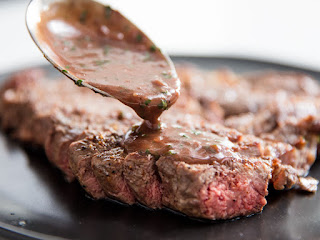I am normally a beer drinker but will occasionally dabble into a bit of wine or good single malt Scotch. I was stationed in Germany 40 years ago and developed a healthy respect for even more beer, but especially wine. White wine is sweeter and good anytime whereas red is supposed to be healthier. I really enjoyed the selections of Riesling, Gewurtztraminer, Spaetlese, Auslese and Baron Auslese. These are all sweet white wines listed from lowest to sweetest. The Rhine and Mosel River valleys produce some excellent varietals.
I still enjoy them from time to time since my return to America but have only in the past 20 years also adapted my tastes to some of the red wines. I have also learned to develop a love of cooking with these wines as well. Since moving to NW Michigan I am reintroduced to another famous wine region. To make a long story short, I have found the heartier reds such as Cabernet Sauvignon to be a bit bold for my taste. Merlot is a decent wine with a lighter body yet some flavor to compliment several dishes. I discovered Syrah on an airline trip and really enjoyed it. Wente Vineyards makes a good one. Red Wine || Wente Vineyards. Both Merlot and Syrah lend themselves well paired with meats such as beef, goat, and lamb as well as pasta.
I have limited my white wine tastes to Savignon Blanc, Moscato, and Chardonnay in recent years. Savignon Blanc and Moscato work well with cooking burning off the alcohol but leaving a nice mild sweetness. Moscato with Bananas Foster is a must.
Chardonnay is my First Love of White Wine here in the states. I love a nice buttery varietal with some of my favorites coming from: Expert Craftsmanship, Extraordinary Wine | Columbia Crest Winery Robert Mondavi Winery | Robert Mondavi Winery KENDALL-JACKSON | Sonoma County and California Wines (kj.com)
Seared Scallops with Pinot Grigio Risotto
There are, of course, several good wineries in our local area that feature these delicious wines.
My main focus in this chapter is my discovery of Pinot Noir. I discovered this a year ago during our exile to Oklahoma waiting for our RV repairs. We dined at one of our favorite steak restaurants, Cattlemen's Cafe in the Stockyards District in OKC. Delicious food as always, but on this visit they recommended a pairing with Pinot Noir from Stoller Family Vineyards in Dayton, OR. I loved it. Early easy red flavor with a nice dry finish without the tart or heaviness. This wine is highly versatile.
Pinot Noir does well in cooler climates and grows well in Argentina, Australia, and many European countries. Australia and Spain produce the best of the grape, but the United States has increasingly become a major Pinot Noir producer as well. Some of the best of these is grown in Oregon's Willamette Valley and California's Sonoma Country.
Two of my favorites include Stoller Dundee Hills Pinot Noir Welcome to Oregon's Stoller Family Estate Vineyard and Winery and Yellowtail (Australia) Pinot Noir yellow tail] wines - Great Australian wine (yellowtailwine.com). Both are readily available throughout the U.S. Both have nice fragrance, a subtle red berry, cherry taste, with a sweet spice after taste. Yellow Tail has a smooth berry taste throughout, while Stoller has more of a drier finish. They are available in the $15-$24 a bottle range, which is cheap as it is sometimes known as one of the world's most expensive wines. I enjoy them both with beef, venison, pork, poultry and nearly pasta. I loved the Yellow Tail recently with Venison Jaegar Schnitzel. I am by no means a wine expert. I have just learned over the years what I like and why. At my age, even a bit of history is intriguing. All of these pictures are recipes I have used these wines to create.









































